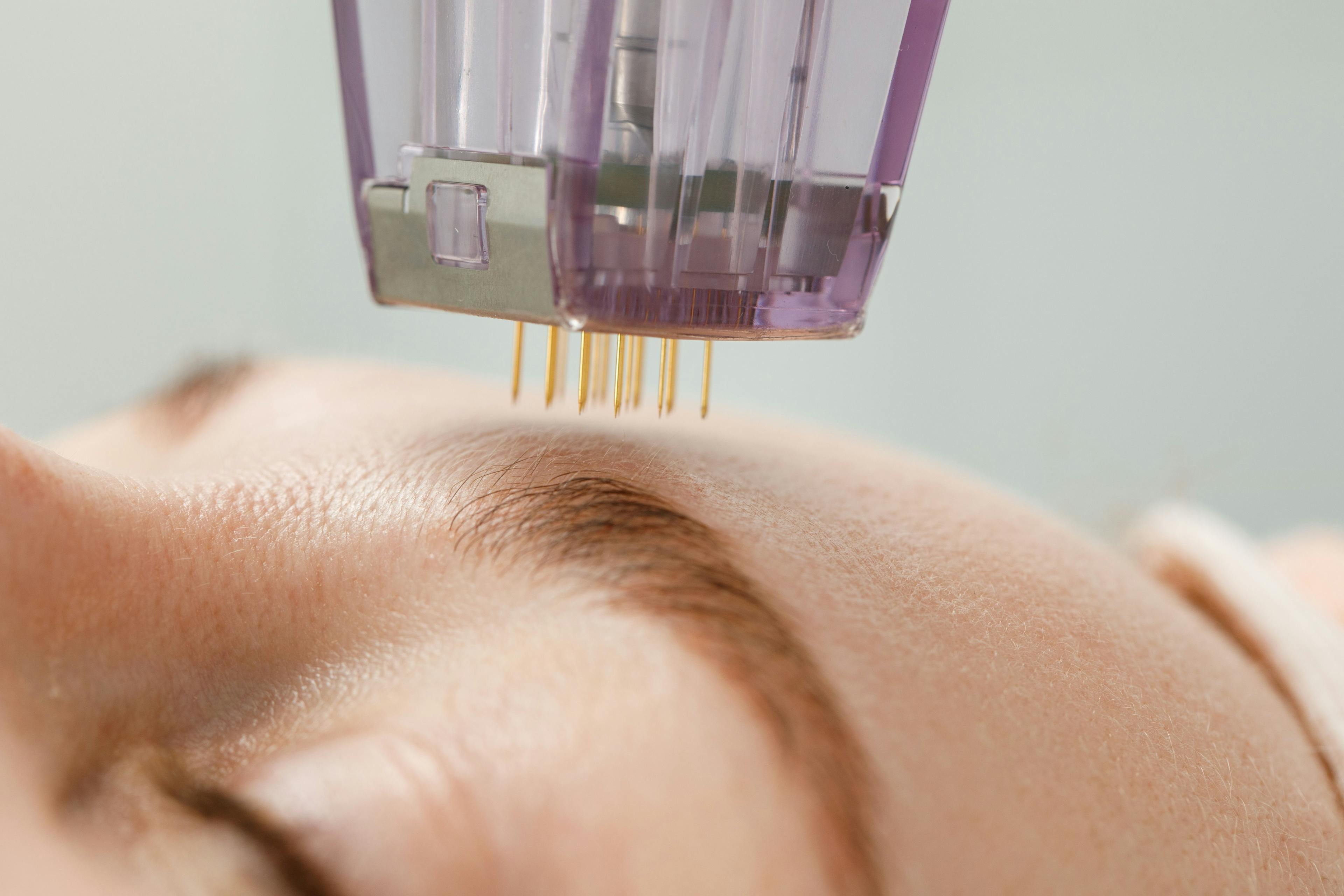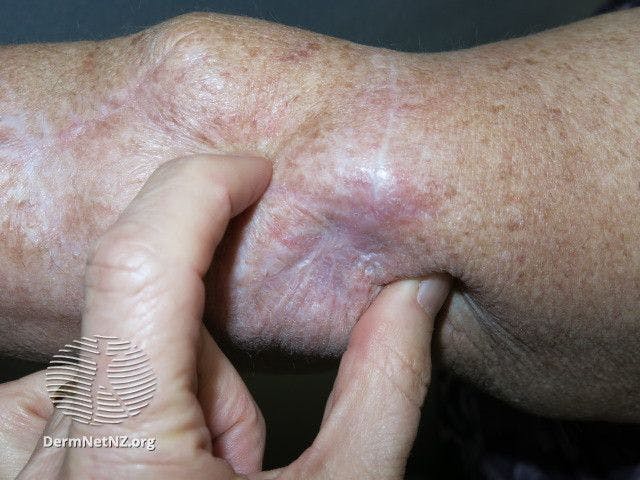
- Acne
- Actinic Keratosis
- Aesthetics
- Alopecia
- Atopic Dermatitis
- Buy-and-Bill
- COVID-19
- Case-Based Roundtable
- Chronic Hand Eczema
- Chronic Spontaneous Urticaria
- Drug Watch
- Eczema
- General Dermatology
- Hidradenitis Suppurativa
- Melasma
- NP and PA
- Pediatric Dermatology
- Pigmentary Disorders
- Practice Management
- Precision Medicine and Biologics
- Prurigo Nodularis
- Psoriasis
- Psoriatic Arthritis
- Rare Disease
- Rosacea
- Skin Cancer
- Vitiligo
- Wound Care
News
Article
Dermatology Times
Navigating the Complexities of Atopic Dermatitis
Author(s):
Audrey Dean’s case highlights the significance of tailoring treatments to individual patient needs, acknowledging that what works for one person might not work for another.
Atopic dermatitis (AD) is a multifaceted condition that can significantly impact a patient’s quality of life. In a candid conversation between Jennifer Holman, MD, FAAD, who practices at US Dermatology Partners in Tyler, Texas, and Audrey Dean, a patient who has navigated this complex condition. The duo shared valuable insights into the challenges faced by those living with AD. Audrey’s journey sheds light on the importance of early intervention, a robust support system, and the evolving landscape of AD treatments in the Dermatology Times’ The Patient Perspective custom video program “The Atopic Dermatitis Patient Journey From Diagnosis to Management.”

The Overlapping Complexities
“Initially, I was going [to the doctor] for other stuff, like HS [hidradenitis suppurativa] [and] my psoriasis. I think that dermatitis started showing up once my psoriasis started showing up,” Dean said.
Holman noted that sometimes as dermatologists treat one skin condition, they’re not treating the other and it continues to worsen. In Dean’s case, she works at a dentist’s office and had patients who would point out her AD flares as she stood over them, which she said took a toll on her mental health.
“It really wasn’t until you showed me your face, your scalp, [and] everything that was going on, [that] I could see it in your eyes. It [was] truly impacting her quality of life,” Holman said to her patient. “As a physician, I have to do a better job intervening here [and] switch our systemic therapies.”
Holman discussed the historical misconception that Th1 and Th2 processes can’t coexist, underscoring how Audrey’s case demonstrates the potential for overlapping conditions, complicating treatment strategies.
Support System and Networking
Dean emphasized the crucial role of a support system, including family, friends, and empathetic coworkers. Their unwavering encouragement and positive outlook played a pivotal role in her journey to recovery, she said. Holman reinforced the importance of seeking online community support for those who might not have an immediate support network.
“It’sprobably another question that we need to be asking some of our [patients with] AD when they are coming in to see us. And at their worst, it’s reassuring to me when…I know they’ve got a network. But I also need to be cognizant of [who doesn’t] because of the impact it has on quality of life. You need those cheerleaders in your corner to help you as you find the right therapies, get on the right therapies, and get on the journey of becoming better...And for those who don’t have friends, family, [or] coworkers [who] are supportive...even finding an online community support group [can help],” Holman said.
Treatment Approaches
The conversation delved into treatment options, from topical therapies to systemic interventions. Dean’s case highlights the significance of tailoring treatments to individual patient needs, acknowledging that what works for one person might not work for another. Before her successful treatment with 15 mg of upadacitinib (Rinvoq) a day for the past 7 months, Dean tried a holistic approach to treatment with light therapies and cutting out inflammatory foods from her diet.
“[It worked] a little bit [but] not enough. They might work better for [others] than they [did for] me. If I tried it again, I [would] try to be more diligent with it and see [whether] that has a better result than last time,” Dean said.
Holman added, “When things aren’t under control, sometimes it’s hard to know what’s making it better and what’s making it worse. But it brings up the idea that treating [AD] is often a multidisciplinary thing. It’s important that, as physicians, if we’reidentifying mental health disorders—I’m not trying to treat that—but having [that] support, counseling, therapy, or seeing a mental health provider [is] important. If we’re seeing other comorbidities, when you’ve got a systemic inflammatory condition, it’s important that we’reidentifying other risks that are associated with that.”
Holman commended the advent of newer therapies like dupilumab (Dupixent) and upadacitinib, revolutionizing the landscape of AD treatment. It took Dean about 3 weeks to notice significant results, less itching, and clearer skin.
Addressing Adverse Events
Dean’s experience with various treatments underlines the need for vigilant monitoring of adverse events, like her skin getting worse with injectables. Holman made it clear that what may work for one patient could exacerbate conditions in another, stressing the importance of shared decision-making between the patient and physician.
“Initially, [Audrey’s diagnosis was] probably called psoriasis because it was a little bit of an unusual presentation for [AD]. It wasn’t until we really suppressed that arm that [suddenly] everything else announced itself as certainly not one that’s responding to a TNF or an IL-23 therapy,” Holman shared. “When I consider treatment options, I typically go through this red light, green light, red light, yellow light, green light.”
Looking Ahead
Dean advised other patients to seek help early and cultivate a strong support system. She acknowledged that being proactive in asking questions and seeking medical advice sooner may have led to quicker intervention. Holman encouraged patients not to lose hope, emphasizing that dermatologists have an array of therapies available to address AD.
EP: 1.The Pathophysiology and Major Comorbidities in Atopic Dermatitis
EP: 2.A Patient’s Experience of Atopic Dermatitis Initial Symptoms and Impact on QoL
EP: 3.The Importance of a Support Network for Patients With Atopic Dermatitis
EP: 4.First Atopic Dermatitis Diagnosis Experience From a Patient’s Perspective
EP: 5.A Patient’s Disease Severity Experience With Supportive Therapies and Dietary Changes
EP: 6.Patient and Doctor Discussion on Side Effects and Managing Treatment for Atopic Dermatitis
EP: 7.Patient Discussion on Treatment Satisfaction with Upadacitinib for Atopic Dermatitis
EP: 8.Therapeutic Evolutions in the Treatment Landscape of Atopic Dermatitis
EP: 9.Clinician and Patient Pearls on Managing Atopic Dermatitis
EP: 10.Navigating the Complexities of Atopic Dermatitis
















Newsletter
Like what you’re reading? Subscribe to Dermatology Times for weekly updates on therapies, innovations, and real-world practice tips.










Rare Autoimmune Disorder Linked With Increased Risk of Certain Skin Cancers
Electrotrichogenic Niostem Device Promotes Hair Growth in Men with Androgenetic Alopecia
OCT and D-OCT Imaging Reveal Distinct Vascular and Dermal Patterns in Skin Photoaging Phenotypes
Guselkumab Effective in Real-World Korean Psoriasis Study
2 Commerce Drive
Cranbury, NJ 08512
All rights reserved.





